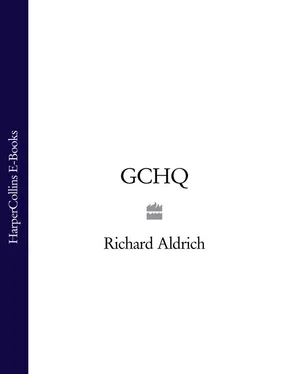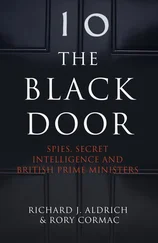The Taciturn went deep, down to 220 feet, and the Soviet ship moved away. Remarkably, a little later they came up and began recording the same vessels, although at a safer distance from both their quarry and the shore. 47 By 16 April they were on their way home. A week later they surfaced for the first time in thirty-four days. The Taciturn reached Faslane naval base four days later, to be greeted by a visibly relieved head of submarine operations. Radio silence meant that for two months no one knew the fate of submarines on these missions. 48
By the late 1950s the Super-Ts, once the most advanced boats the Navy could field, were suffering the wear and tear from long patrols. Commanders would now refer to ‘a shaky old T-boat’. Turpin, for example, had an elderly diesel engine for surface propulsion, in this case taken from another submarine, which had already seen twelve thousand hours of service. In 1957, while on an operation in the Atlantic, the main engine gave up the ghost and the Turpin suffered the indignity of being towed by an Admiralty tug for some five thousand miles.
Although the T-boats were no longer safe for perilous operations against the Soviets, the elderly Turpin was re-engined and sent on further Arctic intelligence missions under the command of Alfie Roake. The first set off on 21 October 1959, and the second, launched on 6 February 1960, set a record for snorkelling without surfacing of forty-two days. 49 On the second mission there were a number of ‘close encounters’. One of these was thought to be with a Soviet torpedo, but fired at long range, allowing the Turpin to evade it by going deep and combing the tracks. Their closest call was being pursued by a flotilla of six Soviet destroyers, which they escaped by diving to a remarkable 425 feet, well below their safety depth. Engineers later told Roake that his hull would have collapsed like an eggshell at 470 feet, and that they had a lucky escape. 50
Alfie Roake’s last mission into Soviet waters was launched in the spring of 1960. By now he was very conscious that the elderly Super-Ts were ‘nowhere near’ American standards. A new decade beckoned with the promise of the quieter and more reliable ‘O’ class submarines, and eventually nuclear vessels. Just like the Super-T class, some of these new boats were modified for a special intelligence role and would be despatched on further hazardous missions inside the Arctic Circle. 51
8 Sigint in the Sun – GCHQ’s Overseas Empire
…with ‘Sigint’ locking onto targets with pinpoint accuracy, our military ached to have a go.
Tim Hardy, Special Branch, Sarawak, April 1964 1
In the 1950s, GCHQ’s top priorities were warning of an impending war with Russia, and gathering intelligence on Moscow’s growing nuclear arsenal. However, on a day-to-day basis, the Middle East, Africa and Asia were the regions where sigint made a tangible difference. Since the end of the Second World War, Britain had been involved in a prolonged ‘escape from empire’, retreating from her colonies and hoping to replace them with a vibrant Commonwealth of newly independent states. The reality was more complex, since many of these countries contained elements that were keen to evict the British faster than they wished to go. Some hosted guerrilla groups sympathetic to Moscow, others were divided communities that faced a troubled journey towards independence. The result was that Britain was involved in an endless litany of small wars that stretched from the dusty deserts of Yemen to the steamy jungles of Borneo. Because these were often guerrilla wars, finding the enemy could be the main challenge, and here sigint was in its element. Moreover, right across Asia and Africa, cyphers were less secure than those of countries like Russia, so GCHQ could also read plenty of high-grade diplomatic traffic.
Although sigint helped to smooth the end of Britain’s empire, GCHQ itself did not always want empire to come to an end. Because the 1950s and 1960s were an era when a great deal of communications was sent over long distances using high-frequency radio, GCHQ depended on the remnants of empire to provide a global network of ground stations to collect these signals. Indeed, Britain’s imperial real estate was one of the key contributions to UKUSA, and was of particular assistance to the United States. Accordingly, in many colonies there were defence and intelligence bases that Britain wished to retain, prompting officials to drag their feet over independence. Elsewhere, the British attempted to persuade post-independence governments to permit some bases to remain. 2
Throughout the 1950s Britain fought one of the most protracted colonial struggles of the post-war era, the Malayan Emergency. The enemy were a hardened band of Communist guerrillas who had been Britain’s uneasy allies against the Japanese during the war. The military forces of the Malayan Communist Party, or ‘MCP’, led by Ching Peng, operated from refuges in the dense jungle. Britain did not initially recognise the seriousness of the Emergency in Malaya, allowing it to get out of hand. However, in October 1951 the MCP succeeded in assassinating Sir Henry Gurney, the British High Commissioner. Thereafter, striking back at the guerrillas and eliminating Ching Peng became a near-obsession for the security authorities in London. When Oliver Lyttelton, the Colonial Secretary, returned to London to report on Gurney’s assassination he promised the Cabinet that he would form special teams ‘aimed at certain individuals’. These were effectively killer squads, and he gave a firm assurance that they would ‘hunt down individual men from Communist higher formations through their families, properties, sweethearts etc.’. 3
Locating the guerrilla headquarters in Malaya was easier said than done. In 1950 a sigint-equipped Lancaster from the RAF’s 192 Squadron was sent out to help in the hunt for the insurgents by tracking their radio communications. Later, undercover agents planted batteries with excessively high power on the guerrillas to damage their radios. When they were repaired, the workshops the guerrillas used were bribed to secretly modify the sets to give out a stronger signal. This gave the opportunity for sigint to achieve a direction-finding fix on the main guerrilla bases. Bombers from the RAF and the Royal Australian Air Force were standing by, and lightning raids were carried out on the deemed location of the signals. Avro Lincoln bombers dropped thousands of tons of bombs into the dense jungle at likely guerrilla locations. Their pilots were always impressed by the resilience of the jungle: their largest bombs vanished into the triple-canopied green foliage below them, and from the aircraft little impact was visible. It is not known how successful these operations were, but Ching Peng, the most important prize, certainly eluded them. 4
In January 1952, Sir Gerald Templer arrived as the new High Commissioner in Malaya. Templer possessed the authority and charisma necessary to create a unified government machine and to implement an effective counter-insurgency strategy. Although famed for his emphasis on ‘hearts and minds’, he also sorted out intelligence, creating a coherent structure in which the army, the police and the civil authorities were forced to share intelligence. All this was done with his customary fiery language – he was quite incapable of uttering a sentence without a cussword in it. 5
Despite Templer’s forceful direction, intelligence did not improve overnight. An important intelligence issue that was never quite resolved was the question of who was actually behind the insurgency. The Colonial Office and the Special Branch officers of the Malayan Police preferred to interpret the Emergency as a wicked plot initiated by Stalin or else Mao, while the British diplomats tended to see it more as a local anticolonial uprising. During the mid-1950s GCHQ began to intercept what it believed to be wireless traffic between the MCP guerrilla leadership and the Chinese Communist Party in Peking. The Special Branch presented this intelligence to senior British officials in Kuala Lumpur with some delight as evidence of its theory of external direction, but only in a summarised form. Diplomats in Kuala Lumpur were sceptical, and asked to see the full transcripts of the transmissions. A major altercation followed, with the diplomats accusing the Special Branch of bending the evidence, while the policemen accused the diplomats of a lack of trust. The issue of exactly how close the MCP was to Peking was never resolved. 6
Читать дальше












